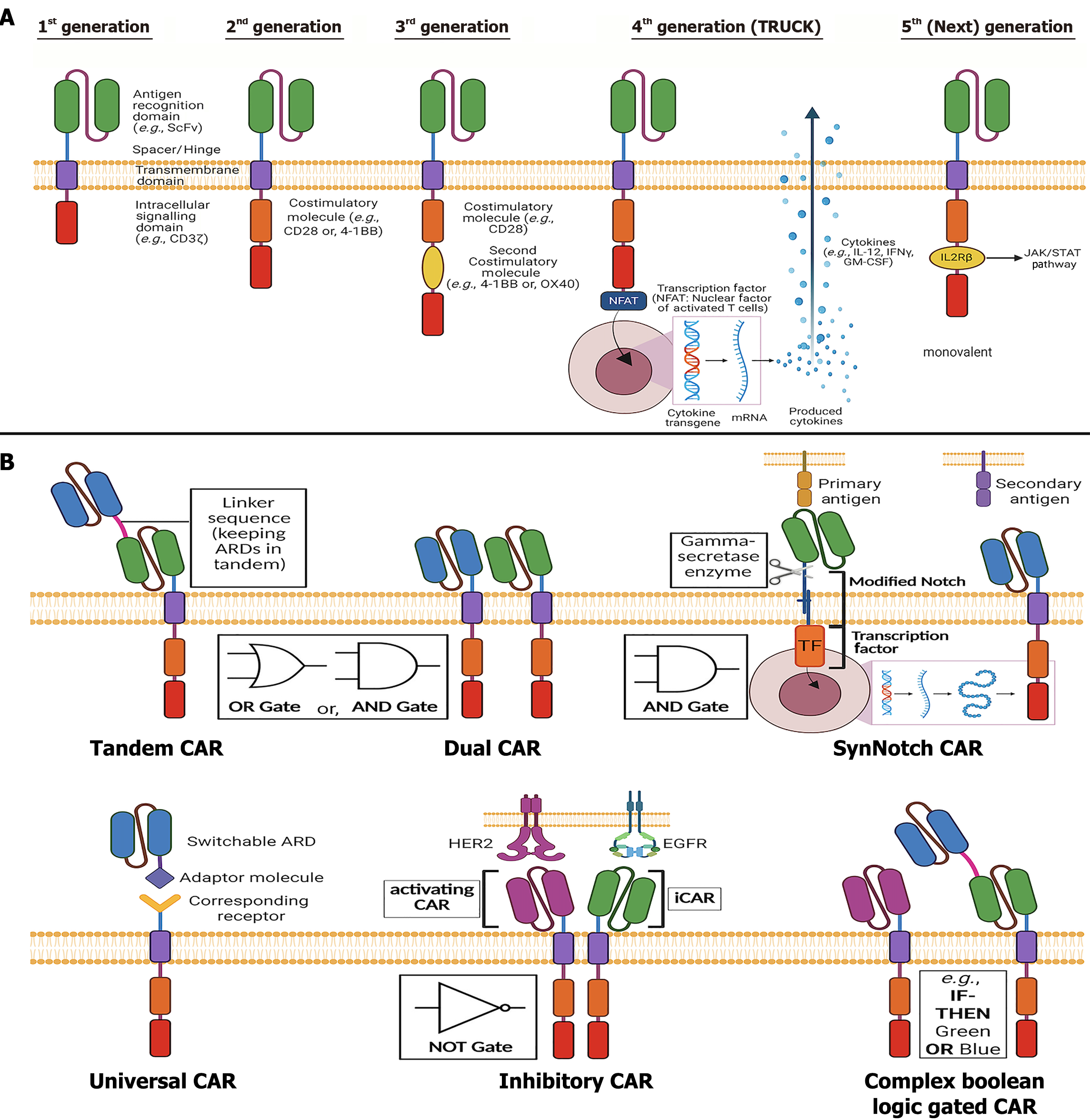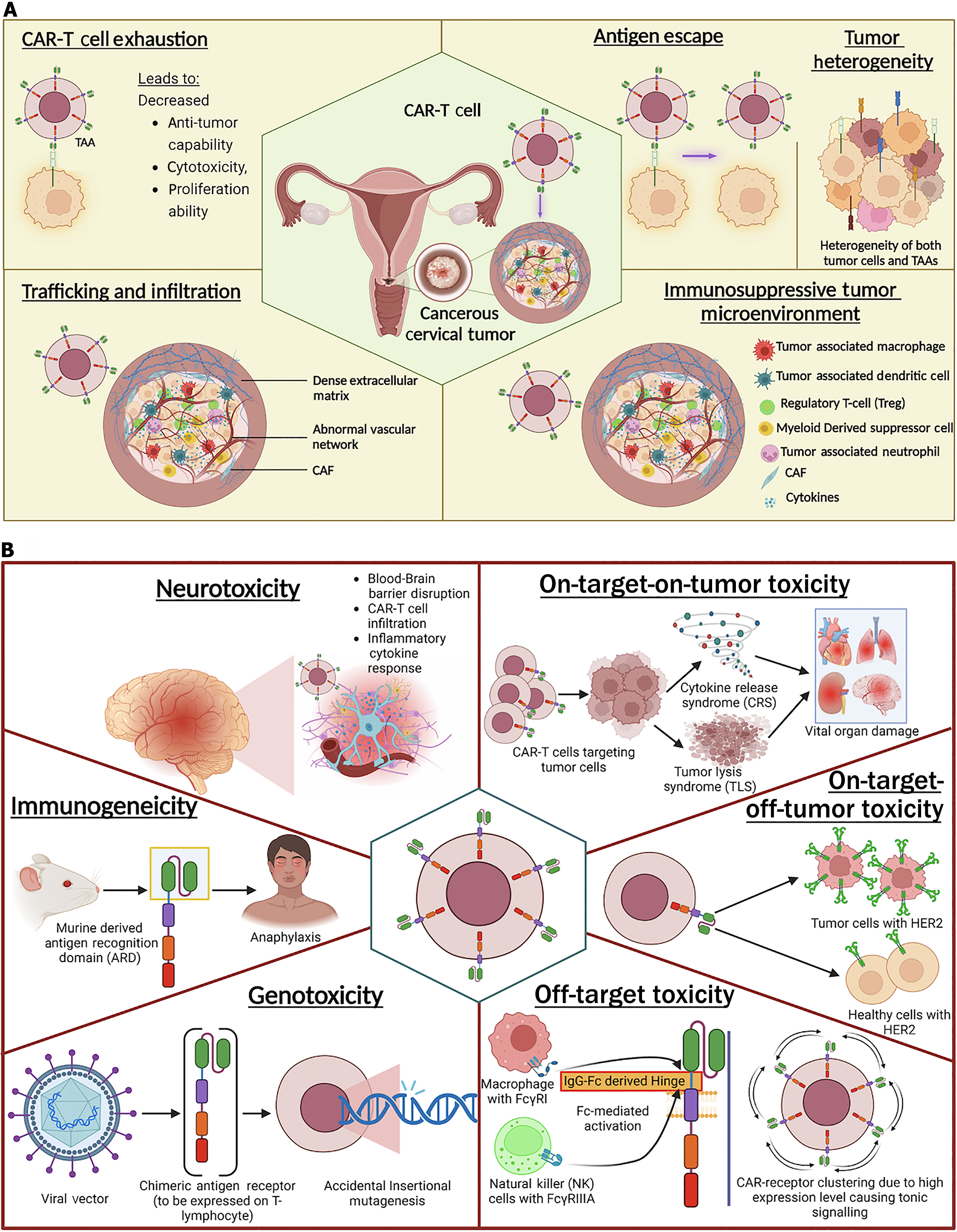Copyright
©The Author(s) 2025.
World J Clin Oncol. Nov 24, 2025; 16(11): 108667
Published online Nov 24, 2025. doi: 10.5306/wjco.v16.i11.108667
Published online Nov 24, 2025. doi: 10.5306/wjco.v16.i11.108667
Figure 1 Domains of the chimeric antigen receptor structure.
VL: Variable light; VH: Variable heavy; ScFv: Single chain variable fragment; ICOS: Inducible T cell co-stimulator; TNFR: Tumor necrosis factor receptor; FDA: Food and Drug Administration.
Figure 2 Complete administration process of chimeric antigen receptor T cell therapy.
NK: Natural killer; PBMC: Peripheral blood mononuclear cell; CAR: Chimeric antigen receptor; CAR-T: Chimeric antigen receptor-T cell.
Figure 3 Mechanistic insights into the chimeric antigen receptor T cell-mediated apoptosis via granzyme pathways.
A: Comparison between classical and non-classical immune synapse structures formed by endogenous T-cell receptor and chimeric antigen receptor, respectively, following receptor-antigen engagement; B: Overview of the Perforin-granzyme degranulation pathway, illustrating both granzyme A and B mediated apoptotic mechanisms in a flowcharted manner. TCR: T cell receptor; SMAC: Supramolecular activation cluster; CAR: Chimeric antigen receptor; ROS: Reactive oxygen species; BID: BH3 interacting domain death agonist.
Figure 4 Chimeric antigen receptor T-mediated tumor cytotoxicity through three apoptotic pathways.
A: Perforin-granzyme degranulation pathway: Chimeric antigen receptor (CAR) T cells recognize antigen-positive tumor cells through CAR-tumor-associated antigen binding, resulting in perforin and granzyme release driven targeted cell death; B: Cytokine-Mediated Pathway: Cytokine (e.g., interferon-gamma) secretion (here, due to the secondary cytokine transgene expression after nuclear factor of activated T cells-included CAR activation) sensitizes the stromal cells in the tumor microenvironment (TME). It upregulates complementary receptor expression and proper stromal targeting through ligand-receptor engagement; C: Death receptor-ligand [Fas/Fas ligand (FasL) Pathway: Antigen loss of tumor cells inside TME can be targeted using the death receptor-ligand engagement, through the formation of the FasL-receptor complex. CAR: Chimeric antigen receptor; IFN-γ: Interferon-gamma; NFAT: Nuclear factor of activated T cells; FasL: Fas ligand.
Figure 5 The evolution of chimeric antigen receptor structures through generational progression and next generation designs.
A: Overview of the five generations of chimeric antigen receptor (CAR) structure; B: Prominent examples of some of the advanced CAR design approaches. ScFv: Single chain variable fragment; IFN-γ: Interferon-gamma; ARD: Antigen recognition domain; CAR: Chimeric antigen receptor.
Figure 6 Considerable disadvantages of chimeric antigen receptor T cell therapy.
A: Key challenges that can probabilistically reduce chimeric antigen receptor (CAR)-T efficacy; B: Major toxicities associated with CAR-T treatment. CAR: Chimeric antigen receptor; TAA: Tumor-associated antigen; Treg: Regulatory T cell; CAF: Cancer associated fibroblast.
- Citation: Arjumand S, Raj A, Prattay KMR, Omer HBM, Azam F. Chimeric antigen receptor T cell therapy: Revolutionizing cancer treatment. World J Clin Oncol 2025; 16(11): 108667
- URL: https://www.wjgnet.com/2218-4333/full/v16/i11/108667.htm
- DOI: https://dx.doi.org/10.5306/wjco.v16.i11.108667


















